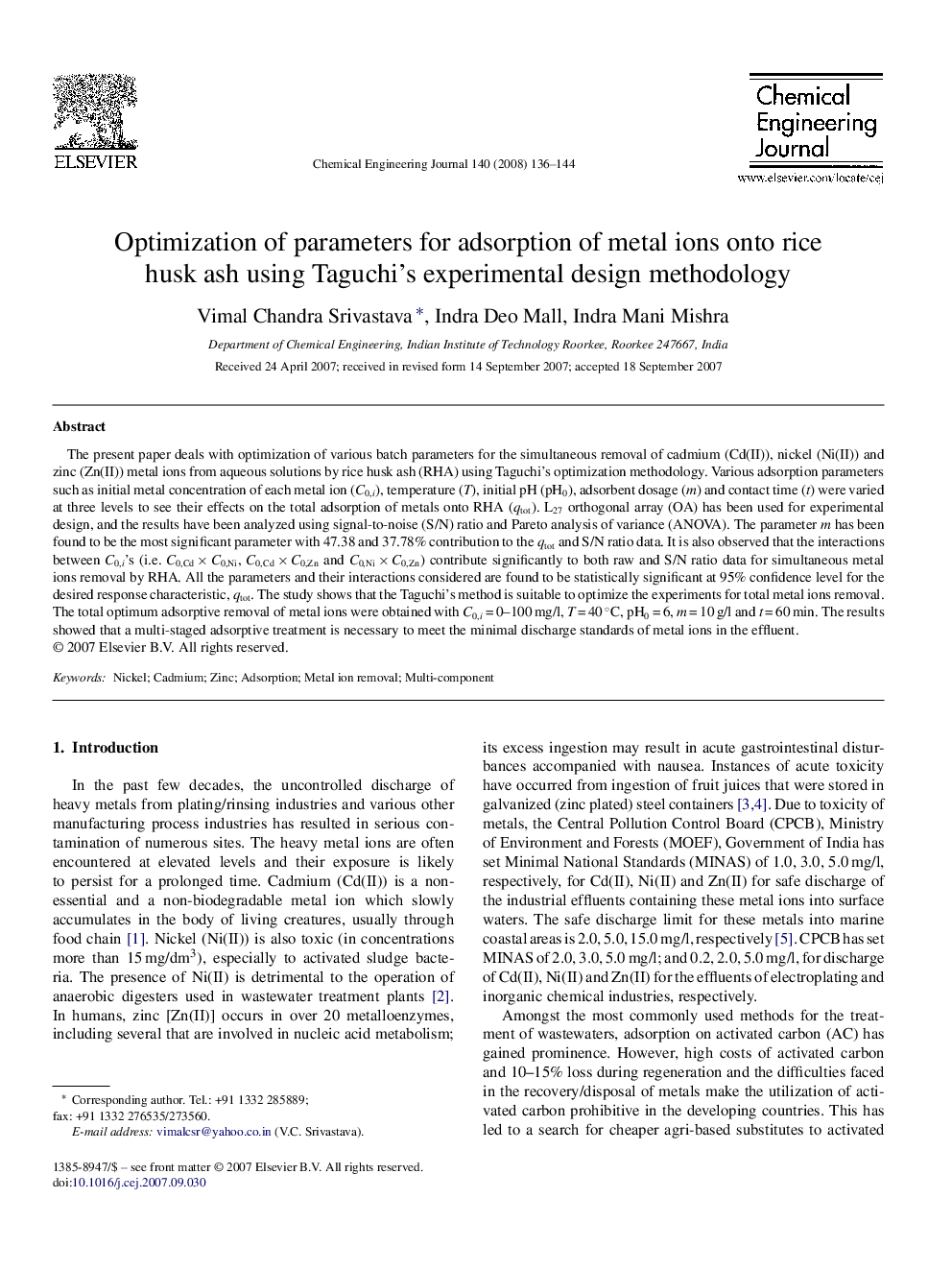| Article ID | Journal | Published Year | Pages | File Type |
|---|---|---|---|---|
| 153093 | Chemical Engineering Journal | 2008 | 9 Pages |
The present paper deals with optimization of various batch parameters for the simultaneous removal of cadmium (Cd(II)), nickel (Ni(II)) and zinc (Zn(II)) metal ions from aqueous solutions by rice husk ash (RHA) using Taguchi's optimization methodology. Various adsorption parameters such as initial metal concentration of each metal ion (C0,i), temperature (T), initial pH (pH0), adsorbent dosage (m) and contact time (t) were varied at three levels to see their effects on the total adsorption of metals onto RHA (qtot). L27 orthogonal array (OA) has been used for experimental design, and the results have been analyzed using signal-to-noise (S/N) ratio and Pareto analysis of variance (ANOVA). The parameter m has been found to be the most significant parameter with 47.38 and 37.78% contribution to the qtot and S/N ratio data. It is also observed that the interactions between C0,i's (i.e. C0,Cd × C0,Ni, C0,Cd × C0,Zn and C0,Ni × C0,Zn) contribute significantly to both raw and S/N ratio data for simultaneous metal ions removal by RHA. All the parameters and their interactions considered are found to be statistically significant at 95% confidence level for the desired response characteristic, qtot. The study shows that the Taguchi's method is suitable to optimize the experiments for total metal ions removal. The total optimum adsorptive removal of metal ions were obtained with C0,i = 0–100 mg/l, T = 40 °C, pH0 = 6, m = 10 g/l and t = 60 min. The results showed that a multi-staged adsorptive treatment is necessary to meet the minimal discharge standards of metal ions in the effluent.
